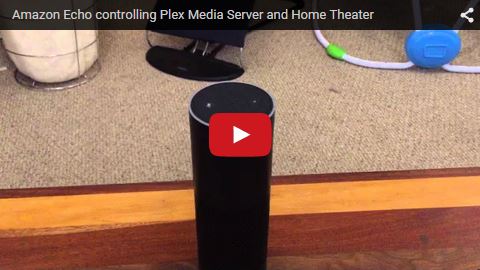#Missing steps
after npm install, run npm shrinkwrap to lock the dependencies for deployment. Amazon can't resolve the package.json file, so you either need to upload the node_modules folder manually, or shrinkwrap before running deploy.sh.
Alexa (Amazon Echo) app for interacting with a Plex Server and controlling client playback
This page is for developers that want to help develop the app. If you want to USE the app, check out this page: https://overloadut.github.io/alexa-plex/
Development is being tracked on Waffle.io: https://waffle.io/OverloadUT/alexa-plex
Here's an early proof-of-concept video
npm installto install all dependenciesnpm testto verify that all tests are passing. If they are, you're ready to rock!
The app is meant to be deployed as an AWS Lambda function. A CloudFormation template (cloudformation-template.yml) has been provided to aid setup.
To use the template, setup the AWS CLI and execute setup.sh
To deploy this project to Lambda, execute deploy.sh
This app requires DynamoDB. You'll need to get that set up and create a table named AlexaPlexUsers with a primary string key of userid.
This table will be created for you in the provided CloudFormation template.
You need to define a few environment variables to tell this app how to talk to your Plex server. The project is set up to use dotenv so you can simply create a .env file in the project root to define all of the needed variables. Here's a template:
APP_PRODUCT=Alexa Plex
APP_VERSION=2.0
APP_DEVICE=Amazon Echo
APP_DEVICE_NAME=Alexa
APP_IDENTIFIER=(generate a UUID for your app)
ALEXA_APP_ID=(create an alexa app and put the app ID here)
AWS_ACCESS_KEY_ID=(you need AWS credentials here that has read and write access to a DynamoDB table)
AWS_SECRET_ACCESS_KEY=(you need AWS credentials here that has read and write access to a DynamoDB table)
